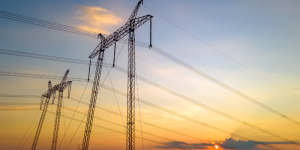Clean energy: heat pumps and electric vehicles along the lines of the Net Zero Emissions Scenario goals, IEA data report
On the table of the IEA analysis: technologies, infrastructure and strategies to implement clean energies

Published by the International Energy Agency (IEA), the Tracking Clean Energy Progress (TCEP) is an analysis that evaluates the developments of more than 50 components of the energy system (technologies, infrastructures, industries and strategies) that are fundamental for the realization of the Net Zero Emissions Scenario.
Clean energies are constantly developing but still too geographically concentrated, not allowing universal access to clean energies.
Clean energies: 3 components are "On track"
Over the 50 components monitored, only 3 were evaluated as "On track" during this edition, meaning they are aligned to reach the Net Zero Scenario goal by 2050; we are talking about solar photovoltaic, electric vehicles and heat pumps.
In particular, sales of electric vehicles grew by 55%, reaching a record of over 10 million. For the first time ever, the announced production capacity for electric vehicle batteries is sufficient to meet the requirements of the 2030 expected demand in the NZE Scenario.
In addition, the nuclear capacity has increased by 40%, with 8 GW of new installation. The 2022 growth represents a clear step forward after years where the additions had remained stable - from 2019 to 2021.
Heat pumps have experienced another record-breaking year with sales growth of 11%. This data is extremely close to the average increase of 15% expected to be aligned with the Net Zero Scenario.
Analyzing the electrolysers, the installed capacity has increased by more than 20% while production capacity by 25%. However, according to the Agency it is likely that the breakthrough still has to happen: based on current projects the capacities could reach almost 3 GW by the end of 2023, with an increase of more than 4 times the total capacity compared to 2022.
Rapid innovation needed to market clean energies
Many components are not yet fully on track globally, but the outburst towards the clean energy economy is evidently accelerating.
Energy efficiency as a whole has grown more than double the previous year, and this is a positive development after years of relatively weak improvements.
However, as the IEA states, a complete transition to zero net emissions will require decarbonisation of all areas of energy production and use. Therefore, rapid innovation is needed to bring clean technologies to the market, especially for those parts of the energy system where emissions are most difficult to deal with, such as heavy industry and long-distance transport.
Moreover, the transition is taking place at different speeds depending on the regions and sectors. Nearly 95% of electric car sales in 2022 took place in China, the US and the EU, and about 75% of the operational and planned carbon capture capacity is located mainly in North America and Europe.
The spread of clean energy in all regions, particularly in emerging markets and developing economies, requires stronger international cooperation and robust policy development.
Focus Correlati



